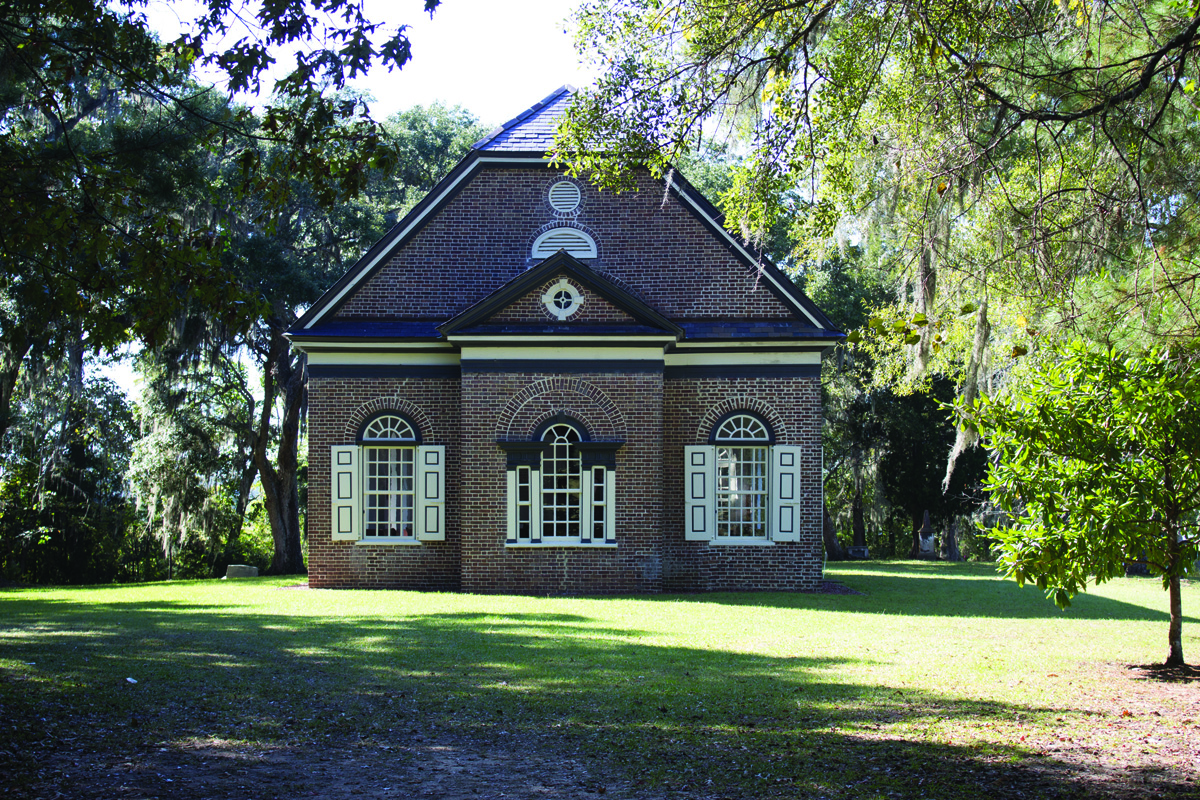A place for reflection, riverside
by Neil Caudle
About an hour’s drive north of Charleston, near Huger, South Carolina, stands a fine old brick chapel on a secluded, oak-shaded bluff overlooking the Cooper River. The place is known as Pompion Hill, but locals tend to pronounce it Pumpkin Hill, probably because the Huguenots who settled the area used an old French word for pumpkin, pompion. But there’s nothing pumpkin-like about this faceted jewel of a chapel, which the National Register of Historic Places describes as a “miniature Georgian masterpiece.”
Erected between 1763 and 1765 as an Anglican “chapel of ease” for St. Thomas Parish, the building remains substantially unaltered, except for reinforcement and repair. Most days, the site is closed to the public, but if you’re one of Amalia Leifeste’s students in historic preservation, you can follow her down a long, narrow lane through the forest and arrive here to study the place in detail, to soak it up as bricks absorb the autumn sun.
Under Leifeste’s guidance, graduate students from Clemson and the College of Charleston have learned to measure and draw every feature of the building with exacting precision, from its carved red-cedar pulpit to its graceful fanlights and exterior brickwork laid in Flemish bond. Back in Charleston, they rendered floor plans and elevations using computer-aided design software. Sometimes, the most artful details did not easily yield to quantification.
“You can’t really measure the dove,” Leifeste says, pointing to a drawing of a hand-carved bird perched atop the pulpit’s ogee roof. “So we take a straight-on photograph and then trace it to try to do a line drawing to approximate the depth and complexity of the carvings.”
All of this meticulous attention to detail helps students internalize the architecture and its visual vocabulary. “They learn it in a different way than you would by just walking through quickly,” Leifeste says.
But the primary reason for documenting a treasure like Pompion Hill is to provide a reliable record, a baseline. “We use documentation drawing to capture a snapshot of a building for that moment in time, in case something happens, or in case there are changes,” Leifeste says. “The chapel’s in really good shape, but if anyone needs to work on it later, it will be useful to have a baseline record of its configuration.” The documentation will be available to other scholars through the Historic American Building Survey archives in the Library of Congress.
Along with documenting the building, students analyzed the grounds, learning about the chapel’s relation to the land and the culture of the time in a workshop with adjunct faculty member Andrew Kohr. And, with Leifeste’s colleague Frances Ford, they studied the materials science, working to conserve the nearby cemetery’s gravestones.
After their study of Pompion Hill, the students presented their results to the stewardship board that cares for the chapel. “The board was excited to have these drawings and the work we’re doing on the cemetery, the grave markers,” Leifeste says. “It’s really beneficial to them.”
Amalia Leifeste is an assistant professor and Frances H. Ford is a lecturer and conservation lab specialist in the Graduate Program in Historic Preservation at Clemson University and the College of Charleston. Carter L. Hudgins is director of the program.



